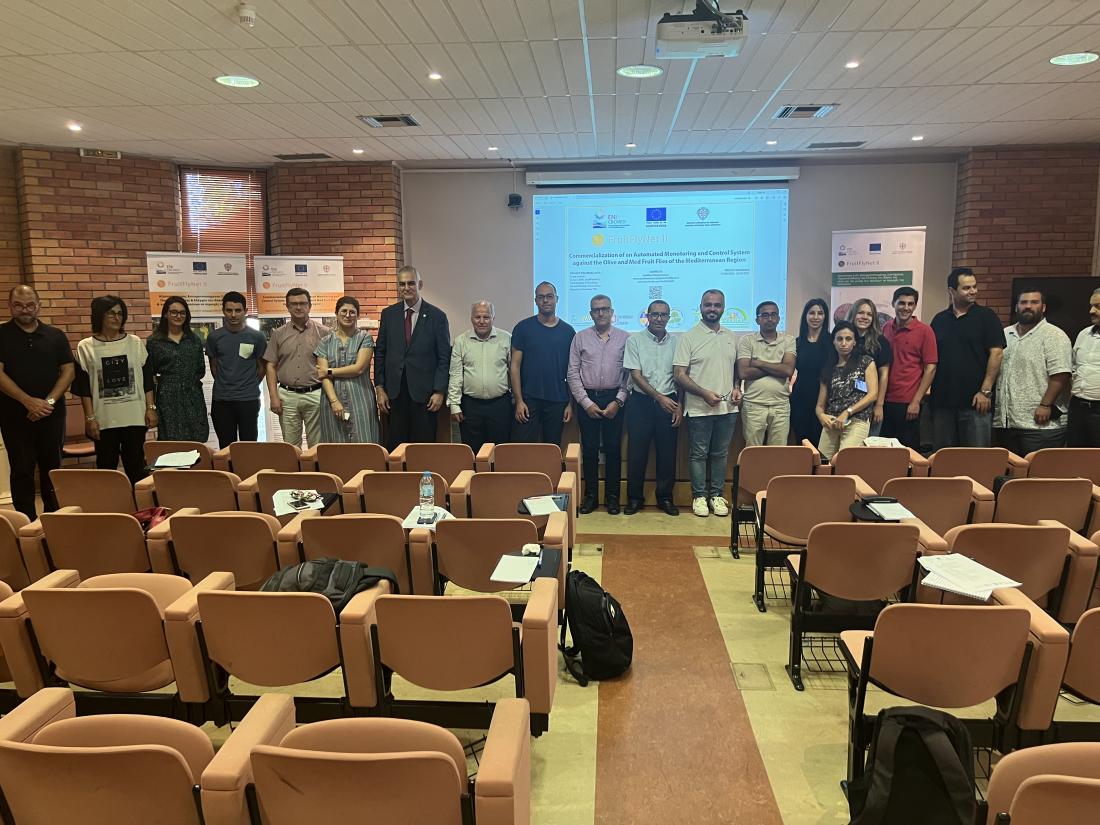FruitFlyNet-ii reviewed the last steps to fight against the Med and Olive flies

The 25th of September 2023 was the first day of the 4th and final Consortium Meeting of FruitFlyNet-ii project held in the premises of the Agricultural University of Athens (AUA, Greece). Representatives of all partners were present which belong to six organizations: the lead beneficiary AUA, the UCO (University of Cordoba, Spain), the UNIMOL (University of Molise, Italy), the LARI (Lebanese Agricultural Research Institute, Lebanon), the IO (L’Institut de l’Olivier, Sfax, Tunisie), and the CRRHAB (le Centre Régional des Recherches en Horticulture et Agriculture Biologique (Susse, Tunisie). The project aimed to develop for first time a complete package solution to control the olive fruit fly (Bactrocera oleae) and the Medfly (Ceratitis capitata) insect pests. The solution is based on a Location Aware System (LAS) providing two prototypes, the OliveFlyNet and the MedFlyNet, consisting of two e‐traps, and a set of e‐services including field digitization, spraying risk maps and e-guides for Integrated Pest Monitoring (IPM) spraying.
During the opening, the Rector of AUA, Professor Spyros Kintzios, stressed that Mediterranean countries face similar problems in their agricultural production and innovation and technology transfer are the most important tools in the effort to support the sustainability of local economies. Towards this aim, the FruitFlyNet-ii project digital applications through precision agriculture will offer many advantages to the farmers of the Mediterranean region in the control of the two most important insect pests of olives, citrus and other fruit crops.
The lead beneficiary of the project, Professor Theodore Tsiligiridis reviewed the main outputs and results achieved during the lifespan of the project and stressed the interest to the final steps to be followed up to the closure. The following sessions were devoted in the progress of the activities in detail, namely the two e-traps development, the e-services, related to the field implementation in the wide-area sites of olives (Sykea in Greece, Alcolea in Spain, Larino in Italy, Hasbaya in Lebanon, and Sfax in Tunisia), peaches (Latium in Italy and Khelidia in Ben Arous, Tunisia), or citrus crops (Foiniki in Greece) in the partners´ coutries. All partners presented their results regarding their updated geodatabase, field mapping, pest monitoring via successful use of e-traps, automatic production of pest risk maps per site and date showing when and where to spray based on Decision Support Systems (DSSs), developed within the project activities. At the end of the day, it was clear that all partners had obtained high experience in field digitization, assembly and use of e-traps and pest risk maps, which are the main elements in the control of the two pests using a LAS under IPM









